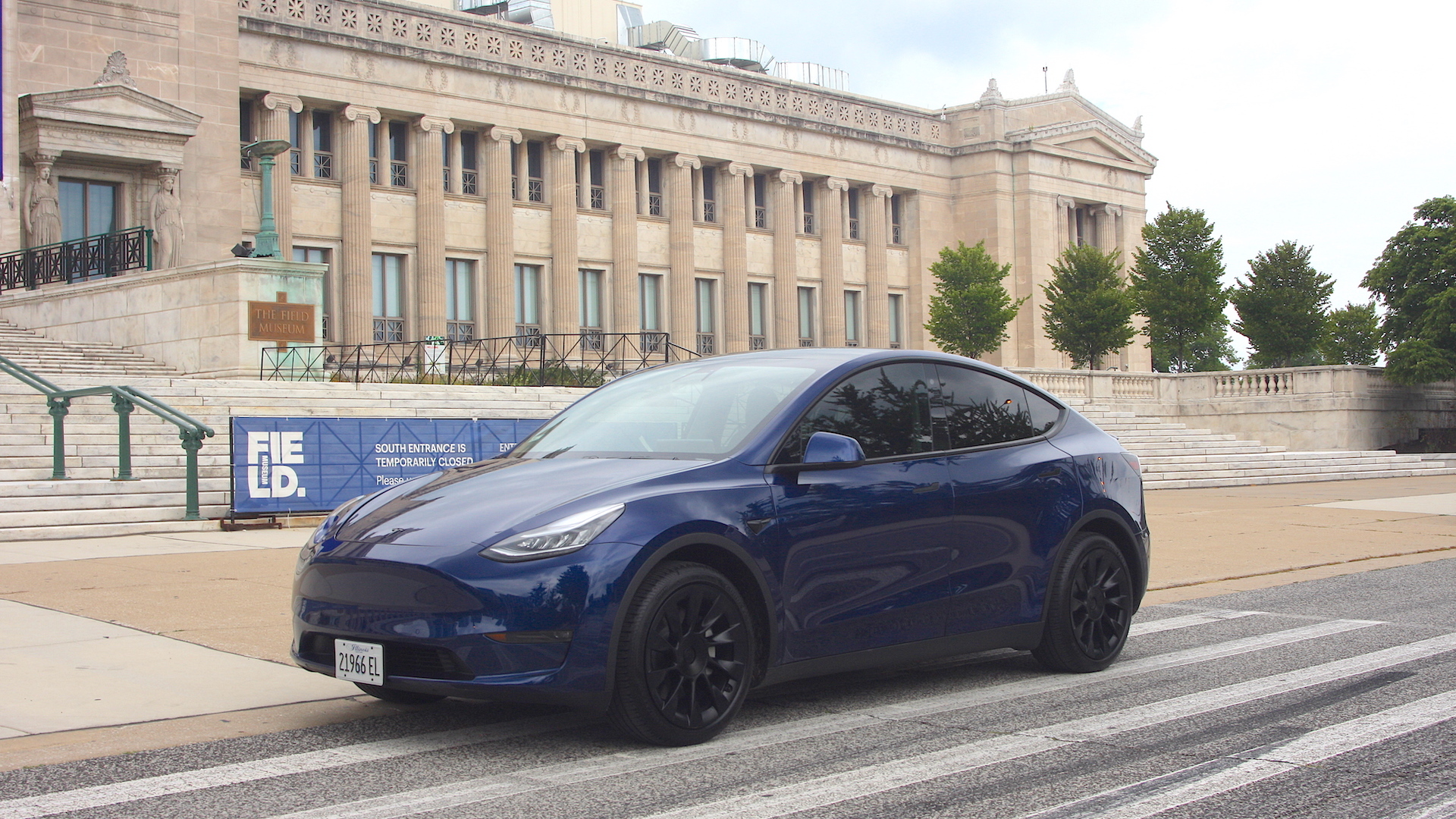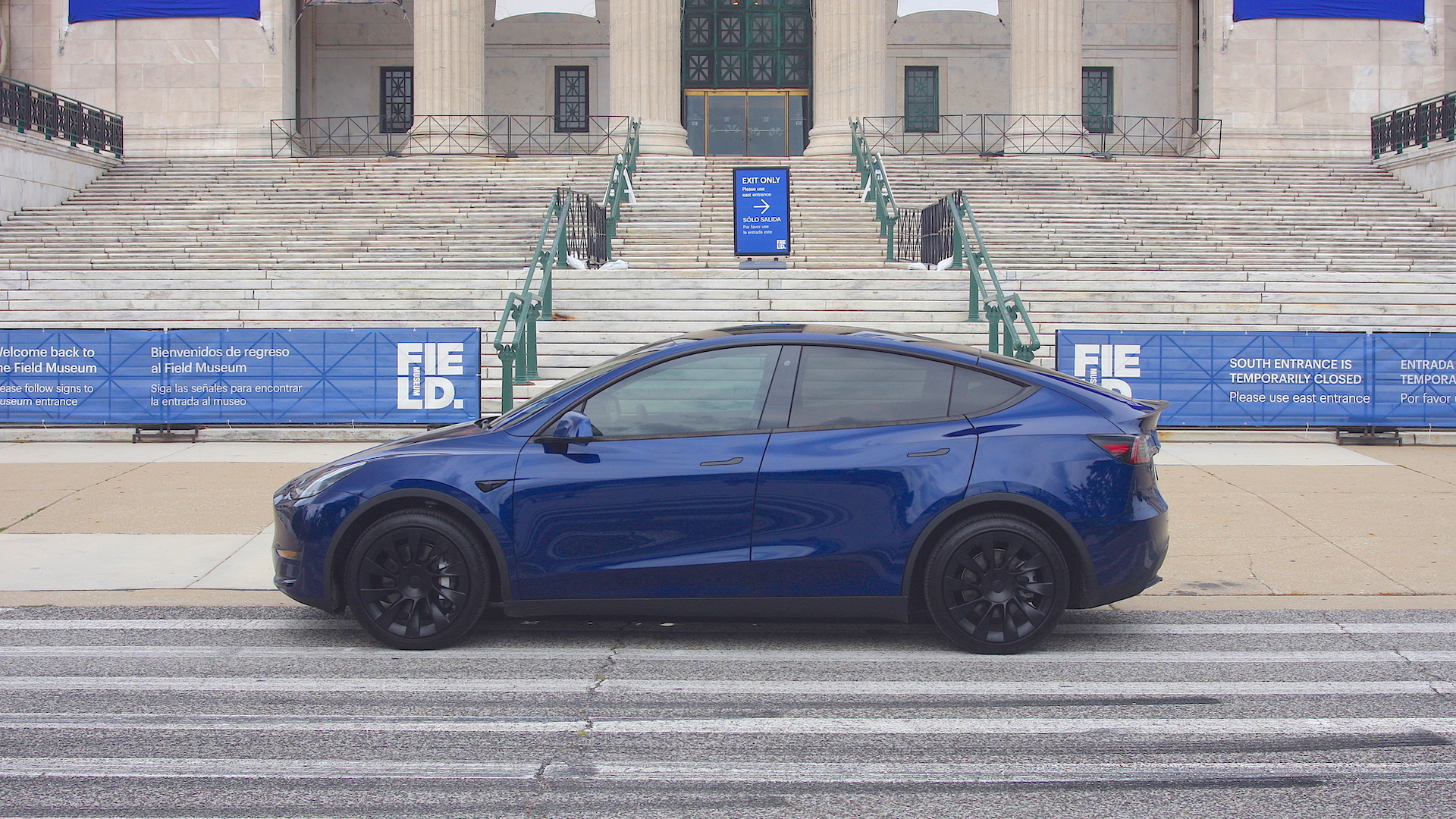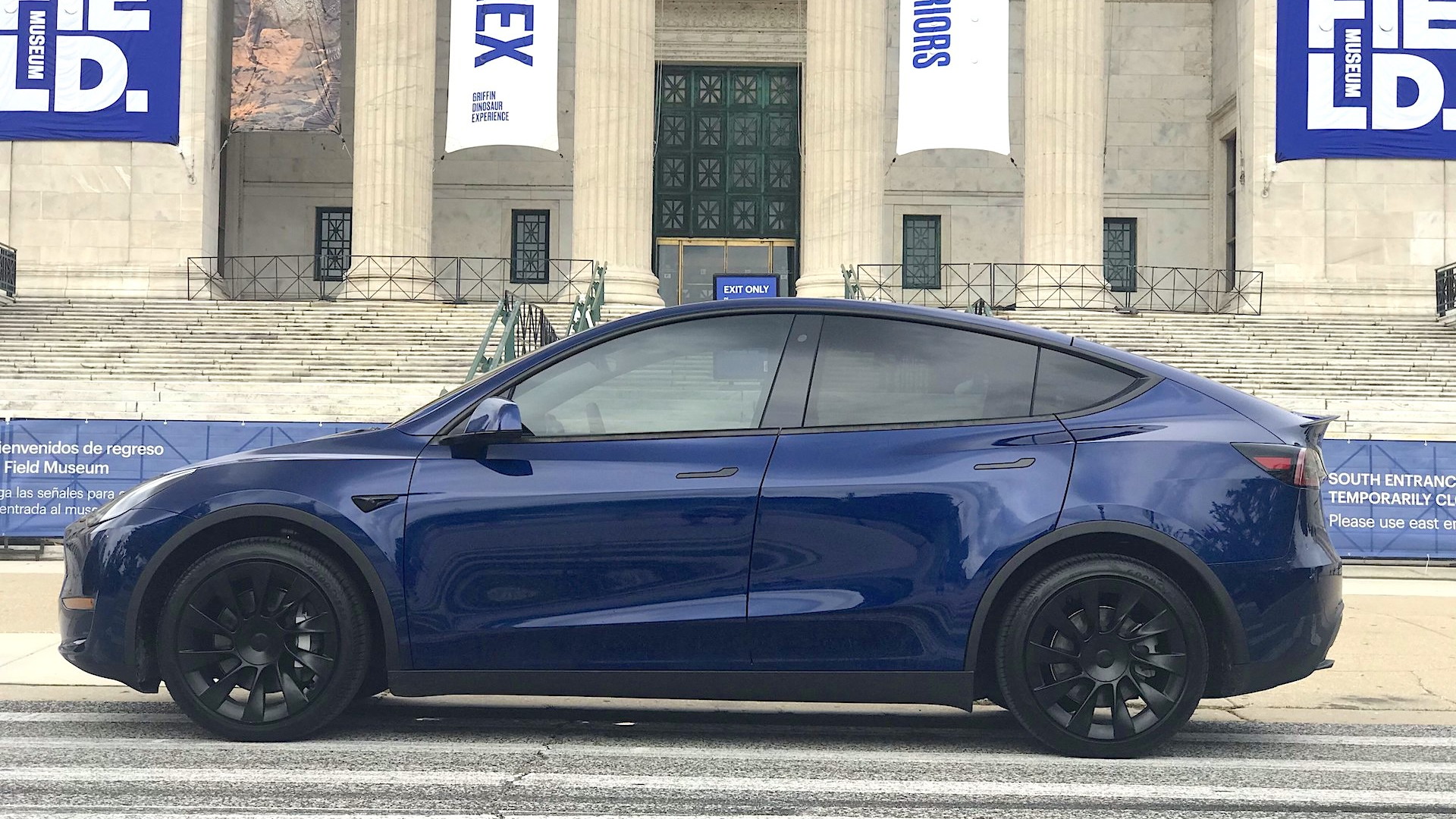While Tesla didn’t invent the electric car, the Silicon Valley startup certainly revolutionized it and made it viable. Along the way, Tesla rethought the car itself in terms of not only propulsion and energy but also space and control systems.
It’s a revolution I haven’t taken part in. Tesla also rethought the automaker-media relationship by largely foregoing it. Despite almost two decades as an auto journalist, I’ve never driven a Tesla.
Until now.
Without a media test loaner anywhere to be found, we turned to an old Chicago tradition: We know a guy.
Paul is an IT professional, the owner of a deejay company, and the cousin of our Interactive Content Manager Joel Feder. The energetic 31-year old is exactly the kind of young professional that reflects well on Tesla. He’s also one of the first customers of the 2020 Tesla Model Y Long Range, a vehicle he’s graciously lent The Car Connection Senior Editor Robert Duffer and me for an afternoon drive around Chicago.
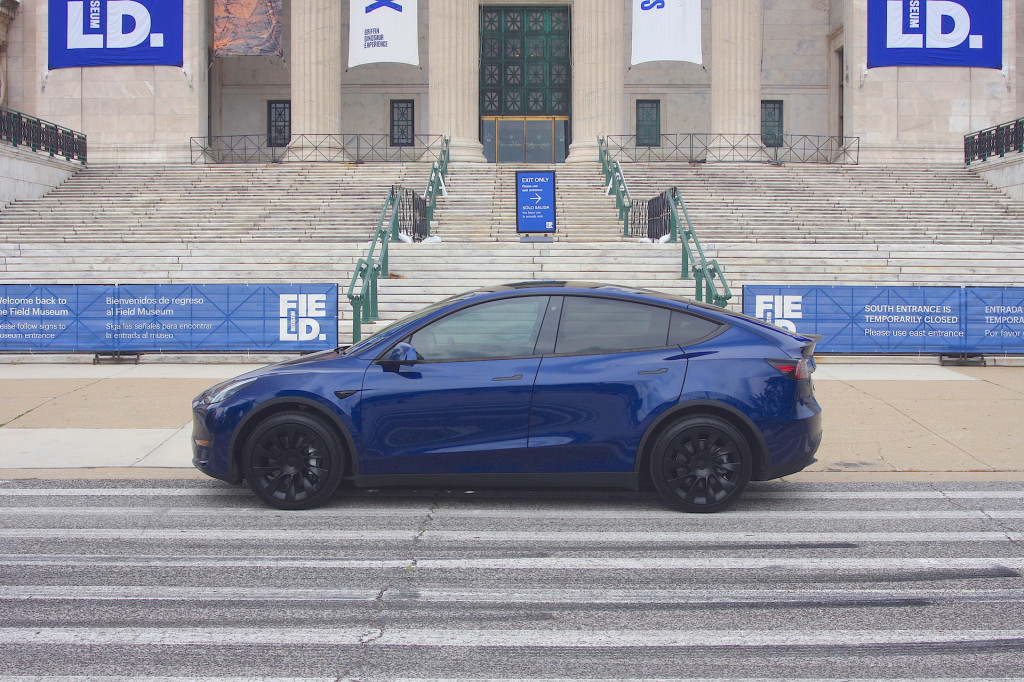
2020 Tesla Model Y
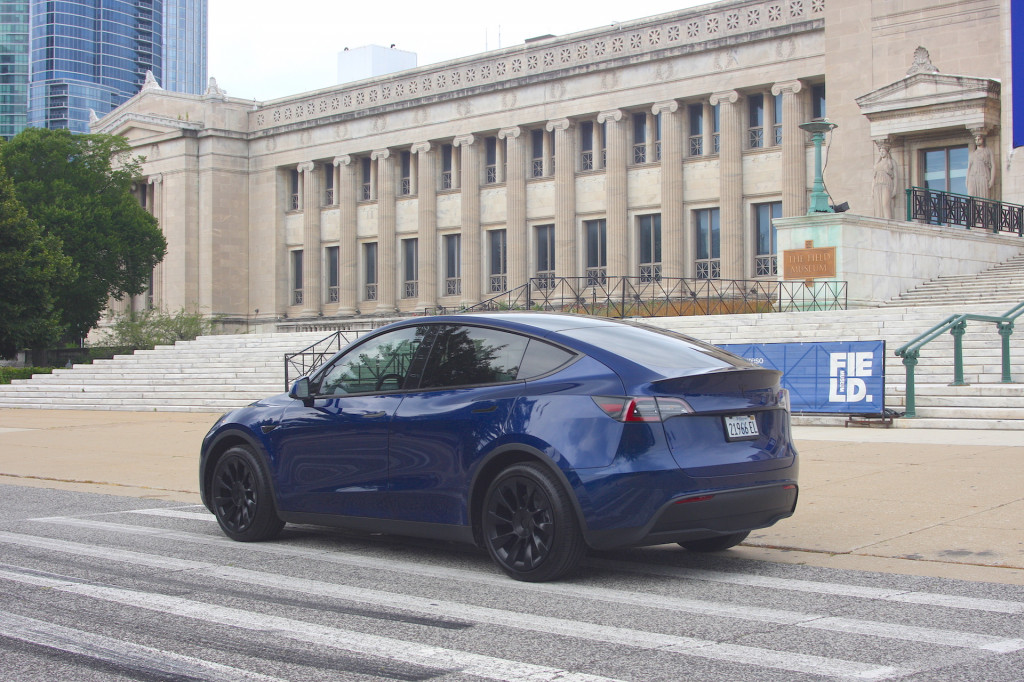
2020 Tesla Model Y
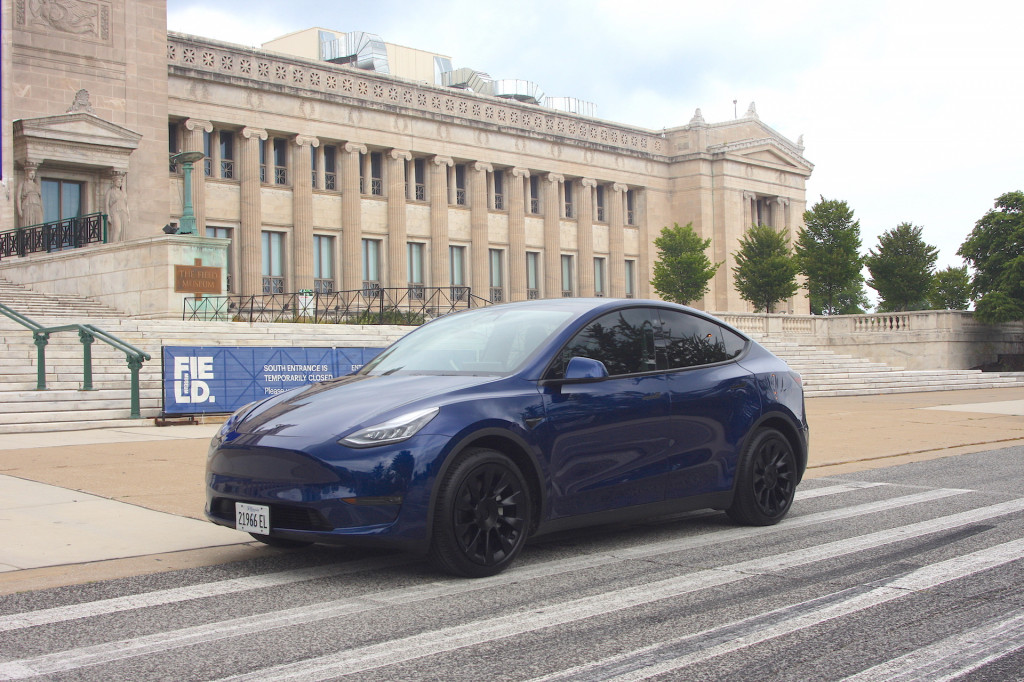
2020 Tesla Model Y
Powerful and sporty
I touch a credit-card-like key to the B-pillar then place it on the center console behind the cupholders to bring the Model Y to life (for Paul, his phone acts as the key). With 230 miles of remaining range and a 76% battery charge, I put it in drive and set off on a tour of the north and south side of Chicago.
It takes just a few blocks to understand the Model Y is tuned more toward sporty than staid. Rather than the standard 19-inch wheels, this Long Range tester is equipped with the optional 20-inch Induction wheels wearing 255/40 Goodyear Eagle F1 Asymetric 5 tires ($2,000). The ride is surprisingly and almost uncomfortably firm on broken pavement. Maybe the 19s make for a more-comfortable ride.
The Model Y’s suspension consists of coil springs, control arms, and an anti-roll bar up front, and a rear multi-link independent setup with coil springs and its own anti-roll bar. The flip side of that firm ride is well controlled handling despite the 4,367-pound curb weight. The Model Y leans little through turns, switches directions responsively, and remains stable at highway speeds. The Model Y Long Range doesn’t have the tuning of the Performance model, but the it’s still more like a BMW X4 than a Lexus RX.
Tesla offers multiple modes for acceleration, brake regeneration, and steering, but not for the suspension. Based on this drive on notoriously choppy Chicago streets, an investment in adjustable dampers with a Comfort setting would smooth out the Model Y’s ride quality. Whaddya say, Elon?
The steering has a remarkably quick 10.3:1 ratio, and available Comfort, Normal, and Sport modes. Oddly, the Sport mode is the best. It’s heft seemingly slows down the steering by steadying the on-center feel and preventing the need for minor corrections on the highway.
Two other modes allow me to drive the Model Y mostly with one foot. The regenerative braking’s Standard mode applies very noticeable drag any time I’m not on the throttle pedal, while the Low setting lets it coast more, though there’s still some drag. At city speeds, in the Standard mode, it’s easy to stop at lights without ever touching the brake pedal. When I build up too much speed, though, especially during a later highway run, I have to engage the mechanical brakes with the brake pedal to stop for red lights. Fun fact: the Model Y’s brake pedal only controls the mechanical brakes; the rest of the braking is done with regen.
Tesla also provides modes for what happens when the car comes to a stop: Creep, Roll, and Hold. The Hold setting effectively puts the car in park when it comes to a stop—holding my foot on the brake at a light isn’t necessary. The Creep mode acts like a normal automatic transmission car when you lift off the brake pedal and the Roll mode doesn’t move the car forward but allows physics to do its thing.
The final parameter controlled by drive modes is acceleration, with Chill and Standard modes. Going with Paul’s preferred Standard setting, the Model Y’s dual motors are always at the ready. When I jab the throttle, the front induction motor and rear permanent magnet motor draw on a shot of electricity from the 75-kwh battery pack to provide immediate, head-snapping acceleration, no matter if it’s from a stoplight or at 50 mph. Tesla doesn’t provide horsepower and torque figures, but Road & Track quotes 384 hp and 376 pound-feet of torque. Tesla does, however, quote a 0-60 mph time of 4.8 seconds, and my butt dyno tells me the Model Y is capable of every bit of that.
Between the touchy throttle response and the immediate drag when I lay off the throttle, the accelerator pedal can feel like an on/off switch, and that makes it hard to drive smoothly in the Model Y. I’d need to train my right foot for more than an afternoon to keep passengers from rocking back and forth, which is exacerbated by the taller crossover ride height. Until I get that experience (I won’t), I’ll avoid chauffer work in a Tesla.
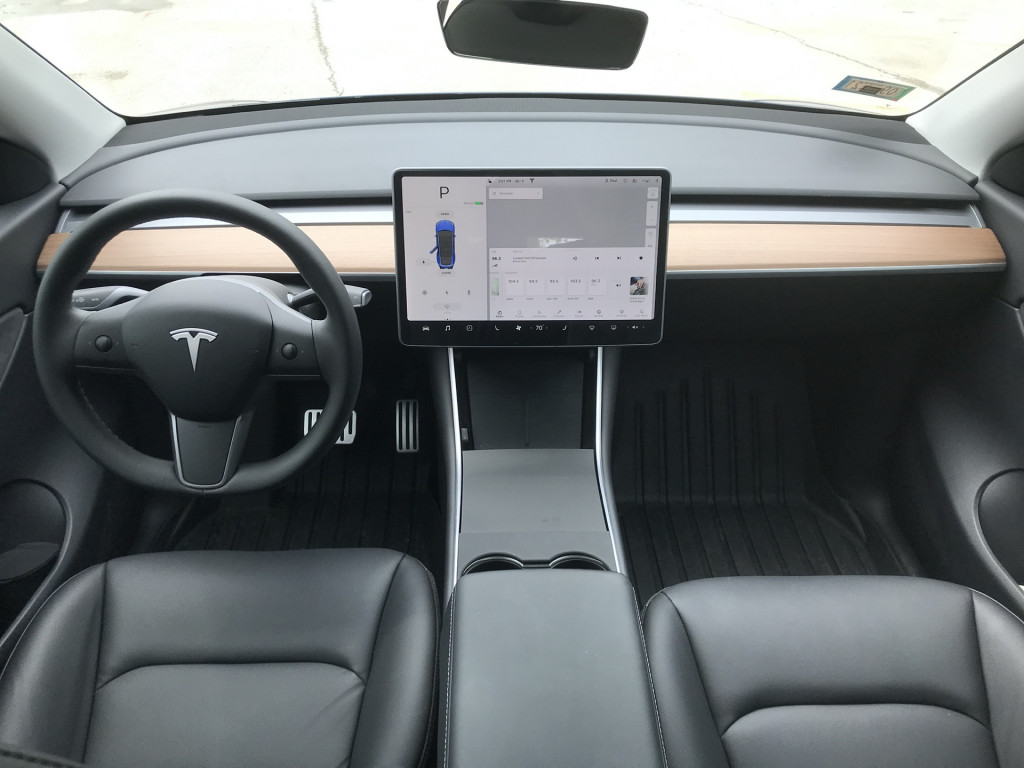
2020 Tesla Model Y
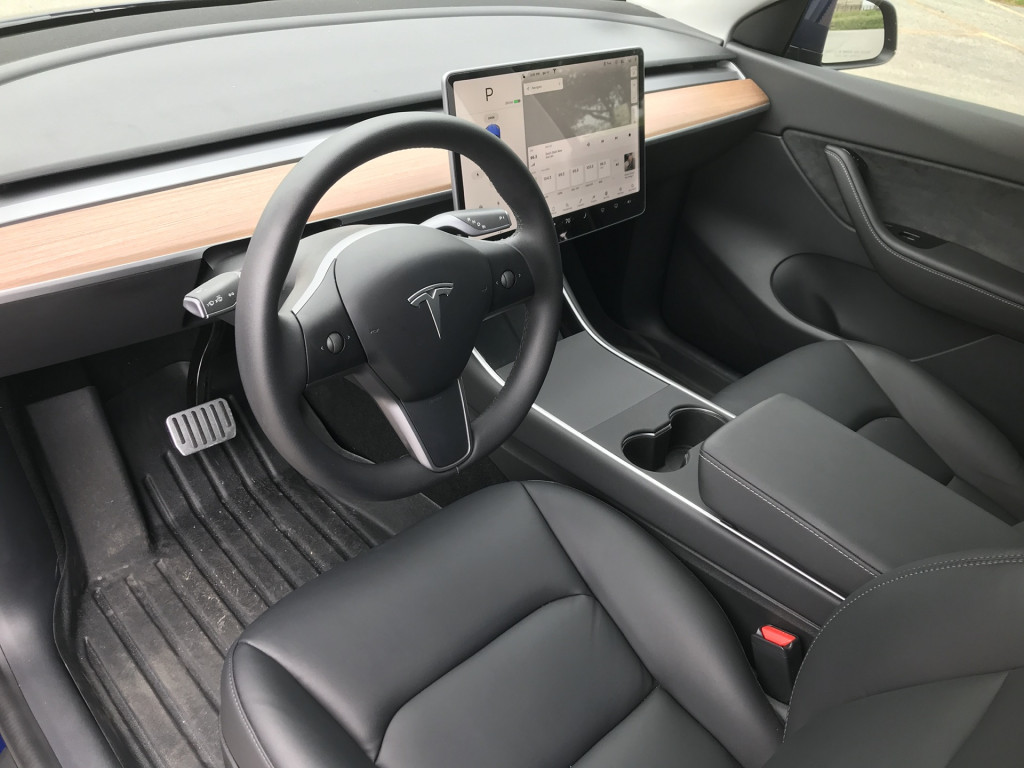
2020 Tesla Model Y

2020 Tesla Model Y
Tech center
Tesla’s rethink of vehicle controls and infotainment puts it at the forefront on in-car technology—even three years after this setup made its debut in the Model 3—thanks to what amounts to a 15-inch laptop touchscreen mounted in the center of the dash. All controls are run through the capacitive touch screen as the dash and center console have no other buttons. The screen reacts quickly, with no detectable lag and it’s interface is simple enough to figure out in one afternoon. Tech types like Paul will appreciate it and catch on immediately.
The screen offers several unique and sometimes whimsical features. A vertical pane on the left side uses the car’s numerous cameras and sensors to show the vehicle’s position in its lane and in traffic. It can recognize vehicle shapes so well that the surrounding cars on the screen look like cars, SUVs like SUVs, trucks like trucks, and vans like vans. This system has a small amount of lag, and it can sometimes look like traffic is intruding into my lane when it’s not.
A Toy Box screen has settings that make the map look like the Mars landscape, accompany the turn signals with fart noises, create a rainbow road with audio from the famous “Saturday Night Live” Cowbell sketch, and more. It’s good for a laugh, especially if you enable the fart sounds for the next unsuspecting driver.
The tech focus extends to the Model Y’s cutting-edge driver-assistance systems. The Model Y comes standard with seven cameras, a forward-facing radar, and 12 ultrasonic sensors. They provide a bevy of standard driver-assistance features, including forward-collision warnings with automatic emergency braking, side collision warnings, blind-spot monitors, and active lane control. For an additional $8,000 ($7,000 when Paul ordered his Model Y last December) either before or after purchase, owners can activate Full Self-Driving, which is an advanced Level 2 self-driving system.
Press down on the right stalk once to activate adaptive cruise control. Press twice and it activates AutoPilot and/or Full Self-Driving. At this point, Full Self-Driving includes a Navigate on AutoPilot function that takes over complete control of the car from on-ramp to on-ramp, even passing slower cars for you. The system can also recognize stoplights, park the car itself, and move the car for you with its summon feature.
Under a Navigate on AutoPilot menu, Tesla provides settings for how aggressive those lane changes are, ranging from Disabled to Mild to Average to Mad Max. We only use AutoPilot, which still takes over steering, acceleration, and braking. Engaging Mad Max mode, the system follows lane lines well, brings the car to a complete stop at lights, changes lanes itself when we use the blinker, and requires that we pay attention and apply torque to the steering wheel every 45 seconds or so. Full Self-Driving also requires drivers to occasionally apply steering torque due to current regulatory requirements.

2020 Tesla Model Y

2020 Tesla Model Y

2020 Tesla Model Y

2020 Tesla Model Y
A spacious egg
Without an engine to accommodate up front, the cabin is pushed forward and voluminous for both passengers and cargo. The second-row seat lacks the standard center hump, so the middle position is more viable than it is in the vast majority of cars—it’s even heated, which I don’t think I’ve ever seen in another car. It has a ton of leg room, too. Another $3,000 will buy a two-passenger third row beginning in 2021.
The second-row seats fold down to open up a very useful 68 cubic feet of cargo volume. Paul notes that he and his girlfriend even slept back there on a road trip to Florida. A Tesla accessory air mattress and active climate control throughout the night made for a comfortable experience. The A/C didn’t even drain the battery because the car was plugged into a charger overnight.
All that room is the result of the Model Y’s shape. It looks like a Model 3 up front, but its windshield is more upright, which creates a taller center section over the front and rear passengers. The roofline draws the same arc-like shape from front to rear as the Model 3, but its taller proportions create a crossover-like look with a bulbous mid-section, rear wheels at the corners, and a coupe-like profile. The black wheels and blacked out trim on this Metallic Blue example lend a sporty vibe, even if this car does look like a dark blue Easter egg on wheels.
Not counting the original Roadster, Tesla has only been building cars on its own production line for less than a decade, and its build quality isn’t up to the standards of automakers that have been the game for ages. On this car, that manifests in ugly welds in the rear hatch area, one worse than the other, an ill-fitting rear door with uneven panel gaps and a poor alignment with the rear fender, and an occasional rattle from the rear hatch area.

2020 Tesla Model Y
At the end of the day, we’ve driven 100 miles, used 144 miles of range, and drained the battery from 76% to 28%. Some of the extra range used was due to hard starts, some was caused by keeping the electrical systems on while taking pictures, and some was just because that’s how the Model Y uses electricity. This vehicle has 316 miles of range, according to the EPA, but Paul says he tends to get about 250 miles of range.
The build quality may not be top notch and the real-world range may not match the EPA numbers, but the range is still industry leading and Tesla’s rethink of the automobile gave a jolt to an auto industry in need of one. Quick, efficient, spacious, and loaded with useful technology, the 2020 Tesla Model Y is a smart rethink of what the automobile can be.
Thanks for the loan, Paul. Sorry about the fart settings.
